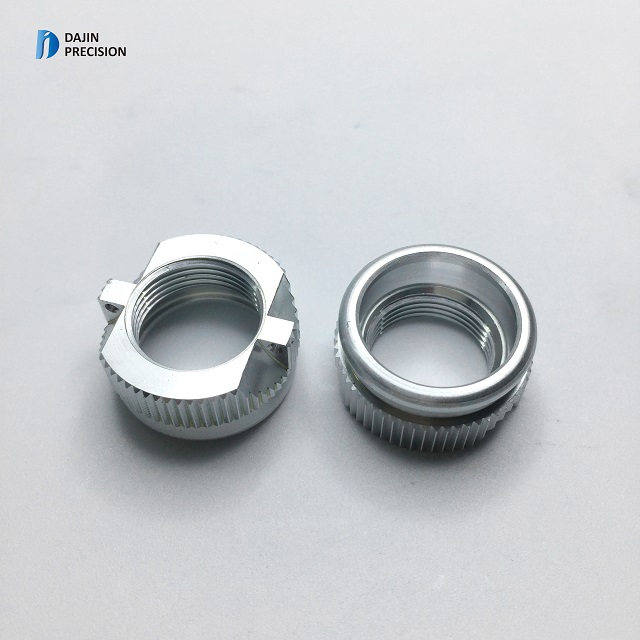Guide to 6061 Aluminum: Properties, Types & Uses | Aluminum 6061 vs 6063, 7075 and 2024 | Dajin Precision
As a commonly used material, what makes aluminum alloy versatile? Starts with the makeup, here we’ll introduce what is 6061 aluminum, its typical types, properties, and uses. In addition, aluminum 6061 vs 6063, 6061 vs 7075, 6061 vs 2024, what are the differences and which one to choose?
What is 6061 Aluminum & Types of 6061 Aluminum
6061 aluminum, also known as Alloy 61S, is precipitation-hardened aluminum alloy commonly used for general purpose and one of the most popular CNC machining materials. From the 6061 aluminum composition, it contains magnesium and silicon as the major alloying elements. Al 6061 is produced through heat treatment and pre drawing, typically available in pre-tempered grades such as 6061-O (annealed), tempered grades such as 6061-T6 and 6061-T651. 6061 aluminum can be fabricated into an aluminum bar, aluminum plate, aluminum sheet, and aluminum angle.
6061 Aluminum Properties
The alloy is the mixture of the pure metal and additional two or more other metallic elements, it’s a hybrid substance that blends the properties of each element, can’t be separated by physical methods.
- Excellent machining and welding performance
- Highly resistant to corrosion, stress, and cracking
- High toughness
- No deformation after processing
- Compact and defect-free
- Easy to polish, easy to color
- Great oxidation effect
6061 Aluminum Uses - What is 6061 Aluminum Used for
The distinct composition makes each aluminum alloy is more suitable for a specific purpose. Dajin Precision offering top-quality aluminum CNC turning services and products for diverse uses. What are the applications of aluminum 6061?
- Extensively used as a construction material: yachts, motorcycles, bicycle frames, wide-span roof structures for bridge decks and arenas, etc.
- Automotive components: chassis
- Aircraft structures: wings and fuselages
- Food processing and packaging: aluminum cans
- Infrastructure use: mass transit and subway platforms, steps, flooring, walkways, and cover plates.
- Scuba tanks and other high pressure gas storage cylinders
- Flashlights, camera lenses, fishing reels, electrical fittings, couplings and valves
What’s the Difference Between Aluminum 6061 and 7075, 6063, 2024?
There are various grades of aluminum with different composition and properties, what are the main differences between 6061 aluminum and other aluminum alloys?
Aluminum 6061 vs 7075 - Difference Between 7075 and 6061 Aluminum
Aluminum 7075 and 6061 both have good corrosion resistance and high strength-to-weight ratios. The difference between 7075 and 6061 aluminum can be analyzed from the following aspects.
- Chemical composition: 6061 aluminum contains less zinc than 7075.
- Mechanical properties: the yield point, shear strength and tensile strength of aluminum 7075-T651 are higher than 6061-T651. The thermal conductivity of 6061-T651 is higher. 6061 alloy provides superior weldability and machinability, while does not get the same high strength and stress resistance as 7075.
- Applications: 7075 aluminum is a better choice for applications that need high strength and low weight, will be exposed to lots of heat and friction, while al 6061 is more suitable for parts that need to be machined and welded.
Aluminum 6061 vs 6063 - Difference Between 6063 and 6061 Aluminum
Aluminum 6061 and 6063 grade aluminum are similar in composition and mechanical properties, they are both available to be extruded in more product forms including sheet, plate, bar, tubing and angle, and has the same density (2.7 g/cm3, 0.0975 lb/in3), while they differ from each other at:
- 6061 aluminum has higher strength than 6063 while 6063 suffers weather better than 6061 and more resistant.
- 6063 holds a better surface finish for decorative parts than 6061 and other 6xxx alloys.
- The elemental breakdown for 6061 aluminum is 0.6% Si, 1.0%Mg, 0.2%Cr, 0.28% Cu, and 97.9% Al, elemental composition of 6063 is nominally 0.7% Mg, 0.4% Si, and 98.9% Al.
- The yield strength, ultimate strength and fatigue strength of 6061 alloy are higher than that of 6063.
- Aluminum 6061 is called as structural aluminum, and 6063 is called as architectural aluminum.
- 6063 aluminum is a better choice when considering ease of extrusion and geometric complexity.
- 6061 aluminum is better in where cyclical loading is common, such as aircraft and marine.
- 6061 grade is more suitable for applications requires joining because of its higher bearing strength.
- 6061 aluminum is better machined than 6063 aluminum in CNC turning, milling and die casting.
Aluminum 6061 vs 2024 - Difference Between 2024 and 6061 Aluminum
- Aluminum 6061 is composed of 0.6% Si, 1.0%Mg, 0.2%Cr, 0.28% Cu, and 97.9% Al, while aluminum 2024 contains 4.4% Cu, 1.5% Mg, and 0.6% Mn.
- The high percentage of copper resulting in decreased corrosion resistance and higher strength of 2024 alloy.
- The yield strength, modulus of elasticity and fatigue strength of 2024 aluminum are higher than 6061.
- 6061 grade aluminum has better machinability and generally cheaper.
- 2024 aluminum is more elastic and better for forming applications, also in sheet and plate metal.
- 2024 against the periodic stresses of flight better than 6061 aluminum.
- 2024 is commonly employed in aircraft structures, especially the wings and fuselage, as well as the transportation industry and large hydraulic manifolds. 6061 aluminum is prominently applied in the construction and automotive industry.

